Museum
A museum is a building or institution dedicated to the acquisition, conservation, study, exhibition, and educational interpretation of objects having scientific, historical, cultural or artistic value.
A museum is an institution that cares for (conserves) a collection of artifacts and other objects of scientific, artistic, cultural, or historical importance and makes them available for public viewing through exhibits that may be permanent or temporary.Most large museums are located in major cities throughout the world and more local ones exist in smaller cities, towns and even the countryside.

The Louvre Museum in Paris (France), one of the largest and most famous museums in the world
 Mummy Louvre
Mummy Louvre

Louvre lion gate

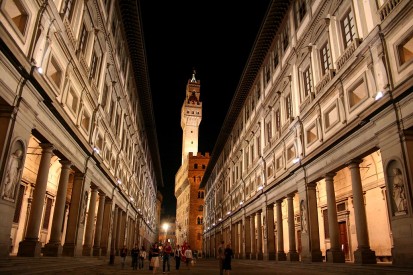
The Uffizi Gallery, the most visited museum in Italy and one of the most important in the world. View toward the Palazzo Vecchio, in Florence
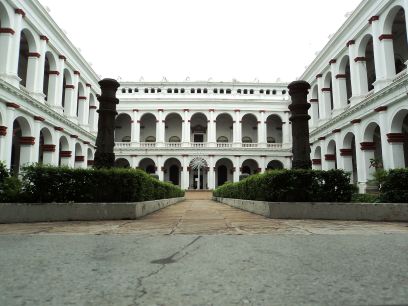
The Indian Museum in Kolkata, India is the oldest and the largest museum in India

National Museum of Iran entrance, Tehran, Iran, inspired by Persian Sassanid architecture

The State Historical Museum in Moscow

The Orthodox Church, later an Ottoman mosque, and now a museum, Hagia Sophia was once the pride of the Byzantine Empire. Historically located in Constantinople, is now modern day Istanbul, Turkey

Museum of Modern Art, New York
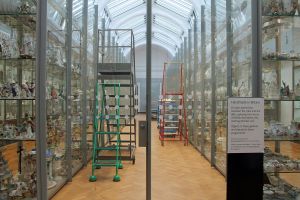
Visual storage at the Victoria & Albert Museum, London, England
Museums have varying aims, ranging from serving researchers and specialists to serving the general public. The continuing acceleration in the digitization of information, combined with the increasing capacity of digital information storage, is causing the traditional model of museums (i.e. as static “collections of collections” of three-dimensional specimens and artefacts) to expand to include virtual exhibits and high-resolution images of their collections for perusal, study, and exploration from any place with Internet.
The city with the largest number of museums is Mexico City with over 128 museums. According to The World Museum Community, there are more than 55,000 museums in 202 countries.
The purpose of modern museums is to collect, preserve, interpret, and display items of cultural, artistic, or scientific significance for the education of the public. The purpose can also depend on one’s point of view.Museum purposes vary from institution to institution. Some favour education over conservation, or vice versa.
Early museums began as the private collections of wealthy individuals, families or institutions of art and rare or curious natural objects and artifacts. These were often displayed in so-called wonder rooms or cabinets of curiosities.
Various positions within the museum carry out the policies established by the Board and the Director. These positions include but are not limited to curators, collections managers/registrars, public programmers/educators, exhibition designers, and building operators. These positions and all other employees should work together toward the museum’s institutional goal.
• Curator – research the collection and most often write the text labels for exhibitions. In larger institutions, there may be a curator assigned to each collection of objects the museum holds. Ex: Curator of Modern Art, Curator of Natural History, Curator of Furniture, etc.
• Collections Management/Registrar – responsible for the care and maintenance of all objects in the museum’s collection, tracks movement of objects in and out of the museum on loan or on exhibition, records information about objects in databases-such as an object’s provenance. Registrars oversee the accessioning process, which formally accepts objects into the museum’s collection with an accession number and detailed record. Collections Managers and Registrars uphold the Collections Policy, which guides what is and is not accepted into the museum collection.
• Public Programmer/Educator – creates programs for the public and designs interactives for exhibitions. This position also oversees volunteers and docents at the museum. Depending on the institution, educators may also research the collections and write text for exhibitions. Educators work with the Board, Director, and Curator to ensure that the needs of the public are met as laid out in the institution’s mission statement.
• Exhibition Designer – designs and installs the exhibition under the supervision of the curator and collections manager. They have the vital role of creating exhibition space that is navigable by the visitor.
• Building Operators – oversee security and maintenance of the museum. In larger museums, building operators will work with Collections Managers to maintain appropriate levels of temperature and humidity which can affect the stability of the objects.

The open-air museum of King Oscar II at Bygdøy near Oslo in the museum guide of 1888
Types of museums vary, from large institutions, covering many of the categories below, to very small institutions focusing on a specific subject, location, or a notable person. Categories include: fine arts, applied arts, craft, archaeology, anthropology and ethnology, biography, history, cultural history, science, technology, children’s museums, natural history, botanical and zoological gardens. Within these categories many museums specialize further, e.g. museums of modern art, folk art, local history, military history, aviation history, philately, agriculture or geology. Another type of museum is an encyclopedic museum. Commonly referred to as a universal museum, encyclopedic museums have collections representative of the world and typically include art, science, history, and cultural history. The type and size of a museum is reflected in its collection. A museum normally houses a core collection of important selected objects in its field.

Museum of Science and Industry, Chicago
 Antique cuckoo clocks in the interior of Cuckooland Museum.
Antique cuckoo clocks in the interior of Cuckooland Museum.

Zoos are considered “living museums”
Gallery

Gallery may refer to:
• An art museum (art gallery)
• A retail art shop (also often known as an art gallery)
• An exhibition room in a museum
• Long gallery, an element in architecture: a long hallway or long, narrow room, frequently decorated with sculptures and frescoes.
Gallery of Modern Art





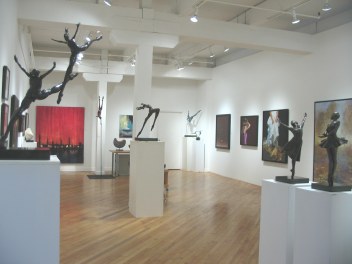

Heritage

A heritage site is a location designated by the governing body of a township, county, province, state or country as important to the cultural heritage of a community. The term usually refers to any non-moveable object with a specific location such as any preserved landscape containing important artefacts such as historic gardens, nature preserves, or archeological sites. The whole ensemble may be preserved separately as a historic site, landmark or national monument, but it may include multiple sites under various protection schemes grouped together such as fortifications or buildings situated along special roadways. Heritage sites are generally protected by the local town’s protection agency but, for objects that are nationally or internationally protected, sometimes more than one agency is involved in their protection.
 China Wall
China Wall

Turkey Nemrut Dagi world heritage site tumulus and statues
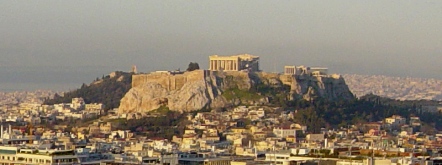
The Acropolis of Athens
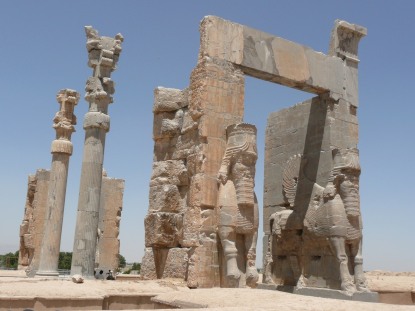
Gateway Persepolis

All different senses, including:
• Natural heritage, an inheritance of fauna and flora, geology, landscape and landforms, and other natural resources
• Cultural heritage, the legacy of physical artifacts and intangible attributes of a group or society: man-made heritage
• Food heritage
• Industrial heritage, monuments from industrial culture
• Virtual Heritage, an ICT work dealing with cultural heritage
• Inheritance of physical goods after the death of an individual; of the physical or non-physical things inherited
• Heredity, biological inheritance of physical characteristics
• Birthright, something inherited due to the place, time, or circumstances of someone’s birth
World Heritage Site

A UNESCO World Heritage Site is a place (such as a forest, mountain, lake, island, desert, monument, building, complex, or city) that is listed by United Nations Educational, Scientific and Cultural Organization (UNESCO) as of special cultural or physical significance.The list is maintained by the international World Heritage Programme administered by the UNESCO World Heritage Committee, composed of 21 states’ parties which are elected by their General Assembly.
 UNESCO World Heritage Logo
UNESCO World Heritage Logo
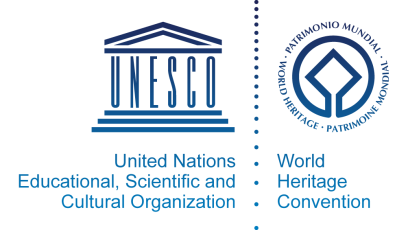
As of 2014, 1007 sites are listed: 779 cultural, 197 natural, and 31 mixed properties, in 161 states parties.By sites ranked by country, Italy is home to the greatest number of World Heritage Sites with 50 sites, followed by China (47), Spain (44), Germany (39) and France (39). UNESCO references each World Heritage Site with an identification number; but new inscriptions often include previous sites now listed as part of larger descriptions. As a result, the identification numbers exceed 1,200 even though there are fewer on the list.
While each World Heritage Site remains part of the legal territory of the state wherein the site is located, UNESCO considers it in the interest of the international community to preserve each site.
Territorial division
Note: this overview lists only countries with ten or more World Heritage Sites.
• Brown: nations with 40 or more heritage sites
• Light brown: nations with 30 to 39 heritage sites
• Orange: nations with 20 to 29 heritage sites
• Blue: nations with 15 to 19 heritage sites
• Green: nations with 10 to 14 heritage sites




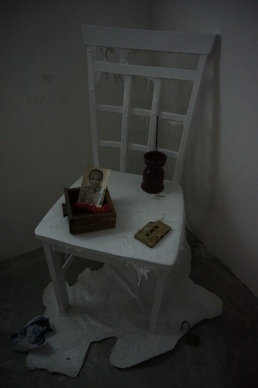
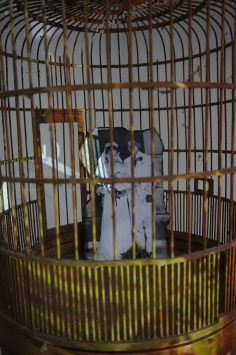

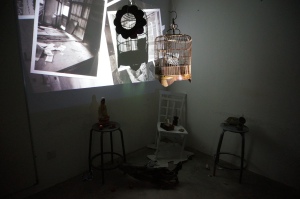

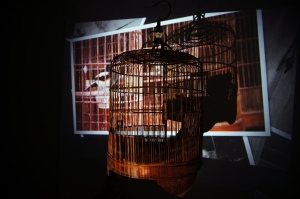





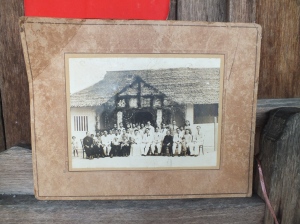







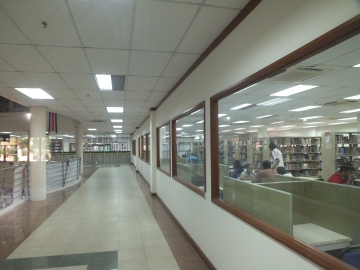
















 Antique cuckoo clocks in the interior of Cuckooland Museum.
Antique cuckoo clocks in the interior of Cuckooland Museum.















 UNESCO World Heritage Logo
UNESCO World Heritage Logo
